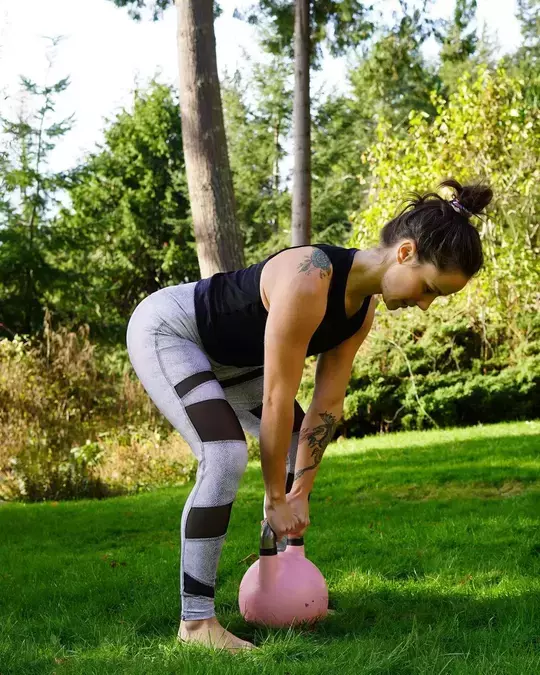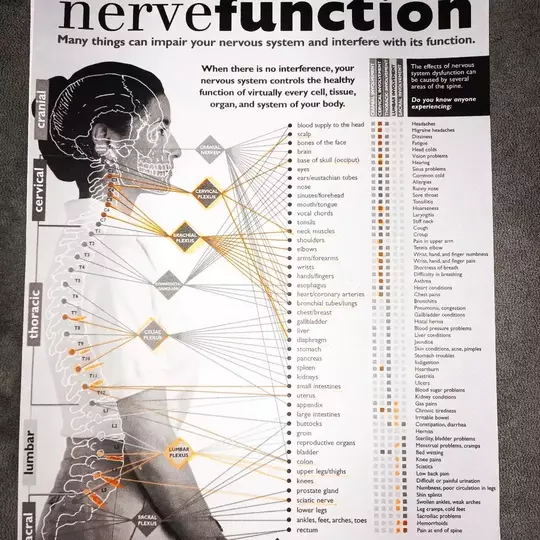Anterolisthesis is a medical condition that affects the spine. You know your back has lots of small bones called vertebrae that help you stand up straight and move around.
Well, anterolisthesis happens when one of those vertebrae slips forward onto the bone below it. This can cause a lot of pain and discomfort for people who have it.
Types
Doctors classify anterolisthesis into three types based on how bad it is:
Grade 1 anterolisthesis:
This is the mildest form of anterolisthesis, where the affected vertebra has slipped forward by up to 25% of its width relative to the adjacent vertebra.
Grade 2 anterolisthesis:
In this type of anterolisthesis, the affected vertebra has slipped forward by between 25-50% of its width relative to the adjacent vertebra.
Grade 3 anterolisthesis:
This is the most severe form of anterolisthesis, where the affected vertebra has slipped forward by more than 50% of its width relative to the adjacent vertebra.
Symptoms of Anterolisthesis
The symptoms of anterolisthesis can be different for each person, depending on how bad it is. Some people might not have any symptoms at all, but others might have:
Back pain:
One of the most common symptoms is back pain, which may be dull or sharp and may worsen with movement or physical activity.
Muscle spasms:
Anterolisthesis can cause muscle spasms in the back or legs, which may be painful and make it difficult to move or perform daily activities.
Loss of bladder or bowel control:
In severe cases of anterolisthesis, nerve compression can cause loss of bladder or bowel control, which is a medical emergency that requires immediate attention.
Limited range of motion:
Anterolisthesis can cause stiffness or limited range of motion in the back or neck, making it difficult to move or perform certain activities.
Changes in gait or posture:
As the condition worsens, it can cause changes in gait or posture, such as a forward-leaning posture or a waddling gait when walking.
Fatigue or weakness:
Chronic pain and muscle tension associated with anterolisthesis can cause fatigue or weakness, making it difficult to perform daily activities.
Causes of Anterolisthesis
Doctors don’t always know what causes anterolisthesis, but it can happen for different reasons:
Trauma:
Anterolisthesis can be caused by a traumatic injury to the spine, such as a fall or car accident, that causes damage to the vertebral joints or ligaments.
Degenerative changes:

Age-related wear and tear on the spinal column can cause the vertebral joints to deteriorate, leading to anterolisthesis. This can include conditions such as osteoarthritis, degenerative disc disease, and spinal stenosis.
Congenital defects:
Some people are born with a congenital defect that affects the structure of the spine, making them more susceptible to anterolisthesis.
Genetic factors:
Anterolisthesis can be caused by inherited genetic factors that affect the development or structure of the spine.
Repetitive stress:
Repetitive stress on the spine, such as heavy lifting or sports that involve twisting or bending, can cause the vertebral joints to become damaged or misaligned over time.
Diseases:
Certain diseases such as rheumatoid arthritis, Marfan syndrome, and Paget’s disease can increase the risk of developing anterolisthesis.
Previous spinal surgery:
Previous spinal surgery can also increase the risk of developing anterolisthesis, particularly if the surgery involved the removal of a large portion of the vertebral bone.
Anterolisthesis Treatment
The good news is that most people with anterolisthesis don’t need surgery to fix it. Usually, the treatment for anterolisthesis depends on the severity of the condition, the age of the patient, and their overall health.
In mild cases, doctors may recommend rest, physical therapy, and medication to manage the pain and discomfort associated with the condition. In more severe cases, surgery may be necessary to correct the slip and relieve pressure on the affected nerves.
Rest and Physical Therapy:
Resting the back and avoiding activities that aggravate the condition can help manage pain and prevent further damage to the spine. Physical therapy can also help strengthen the muscles in the back and abdomen, improving flexibility, and reducing pain and discomfort.
Medication:
Over-the-counter pain relievers such as acetaminophen or nonsteroidal anti-inflammatory drugs (NSAIDs) can help manage the pain associated with anterolisthesis. In some cases, doctors may prescribe stronger pain medication or muscle relaxants.
Surgery:
In severe cases, surgery may be necessary to correct the slip and relieve pressure on the affected nerves. There are various surgical procedures available, depending on the location and severity of the slip. The most common surgical procedures for anterolisthesis include spinal fusion and laminectomy.

Spinal fusion involves fusing two or more vertebrae to prevent movement between them. This can be done using bone grafts, metal rods, or screws to hold the vertebrae in place while the bones fuse.
Laminectomy involves removing part of the vertebra to relieve pressure on the spinal cord or nerves. This can be done to create more space in the spinal canal and relieve pressure on the affected nerves.
Preventing Anterolisthesis
While there is no guaranteed way to completely prevent anterolisthesis, there are some steps individuals can take to minimize their risk of developing this condition or worsening an existing case:
Practice good posture:
Maintaining good posture when standing, sitting, and walking can help to reduce stress on the spinal column and decrease the likelihood of misalignments.
Stay active:
Regular exercise and physical activity can help to strengthen the muscles and tissues surrounding the spine, providing added support and stability.
Lift with proper technique:

When lifting heavy objects, be sure to use the proper lifting technique to avoid unnecessary strain on the back muscles and spine.
Maintain a healthy weight:
Excess weight can put added pressure on the spine, increasing the risk of damage or misalignment.
Take breaks when sitting or standing for long periods:
Prolonged periods of sitting or standing can put a strain on the spine, so it’s important to take breaks and stretch regularly to reduce the risk of damage.
Avoid smoking:
Smoking can weaken the bones and tissues in the body, including those in the spinal column, making them more susceptible to damage and misalignment.
Practice safe sports techniques:
Participating in high-impact sports or activities can increase the risk of spinal injuries, so it’s important to use proper technique and protective equipment to prevent damage.
While these measures cannot guarantee the prevention of anterolisthesis, they can help to reduce the risk of developing this condition or worsening an existing case.
Conclusion
Anterolisthesis is a condition in which a vertebra in the spinal column slips out of its normal position and moves forward relative to the adjacent vertebra.
If you suspect you have any of the symptoms, it is important to consult a healthcare professional for diagnosis and appropriate treatment.
